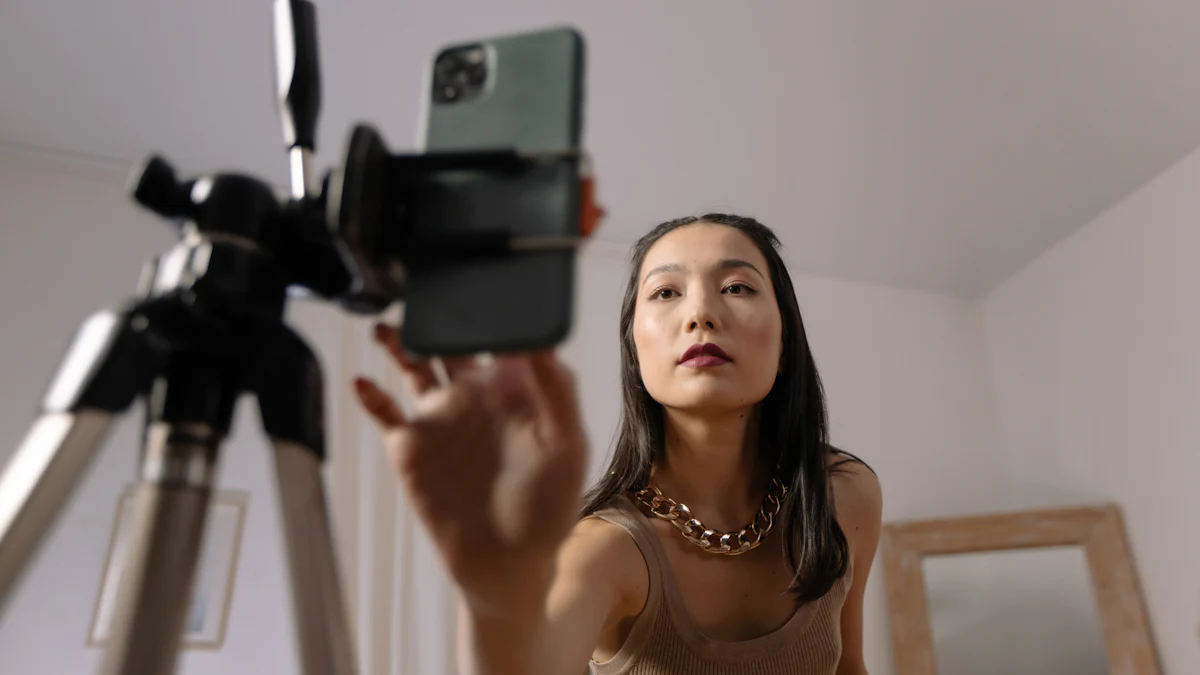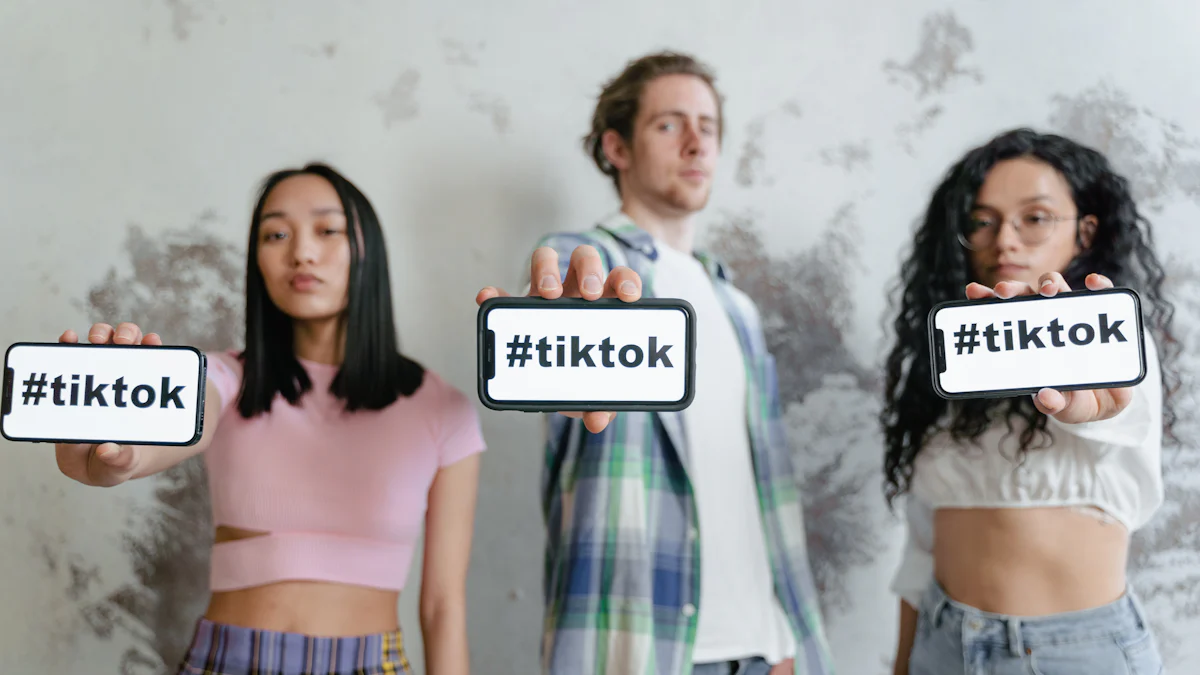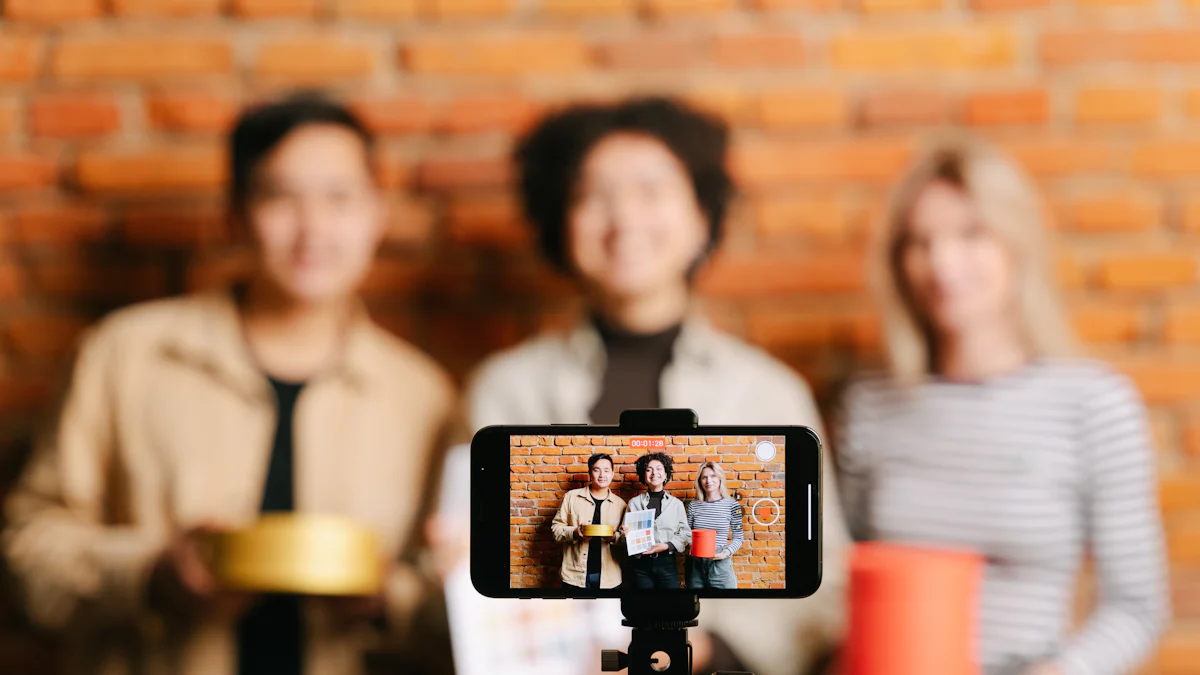Emerging Influencer Marketing Trends for 2025 Success

Influencer marketing has become a game-changer for businesses. Staying ahead of trends isn’t just smart—it’s essential. Did you know Google searches for "influencer marketing" skyrocketed by 400% in the UK between 2016 and 2023? That’s not surprising when you consider how much brands are investing. In 2024, companies are expected to spend $8.14 billion on influencer campaigns, with that number climbing to $9.29 billion in 2025. Nearly 80% of U.S. marketers at larger companies already work with influencers. If you’re not adapting, you’re falling behind. Whether you’re working with a social media influencer marketing agency or building in-house strategies, now’s the time to evolve.
Leveraging Micro-Influencers for Authentic Engagement

The Shift from Celebrity Endorsements to Micro-Influencers
Have you noticed how brands are moving away from celebrity endorsements? It’s not just a trend—it’s a smart strategy. Micro-influencers are taking the spotlight, and for good reason. They’re more relatable and approachable than big-name celebrities. Their followers trust them because their content feels personal and authentic.
Working with micro-influencers also keeps your budget in check. You can collaborate with several micro-influencers for the same cost as one celebrity. Plus, their engagement rates are often higher. Why? They have closer relationships with their audience. This connection fosters trust, which is gold for your brand.
Of course, there are challenges. Managing multiple micro-influencers takes time, and their reach isn’t as broad as a celebrity’s. But if your goal is authentic engagement, micro-influencers are worth it.
Building Loyal Audiences with Micro-Influencers
Micro-influencers excel at building loyal communities. Their followers see them as peers, not untouchable icons. This dynamic creates a sense of belonging. When they recommend a product, their audience listens.
For example, micro-influencers often share stories about how they use a product in their daily lives. This storytelling makes their recommendations feel genuine. Over time, this authenticity builds trust and loyalty.
Did you know micro-influencers can even grow with your brand? A successful partnership can turn them into long-term ambassadors. As they gain credibility, your brand benefits too.
Tips for Partnering with the Right Micro-Influencers
Finding the right micro-influencers is key. Start by identifying creators whose values align with your brand. Look for those who already engage with your target audience.
Check their engagement rates. While nano-influencers have the highest rates (4.4%), micro-influencers still perform well at 2-3%. Balance engagement with reach to meet your campaign goals.
Finally, build genuine relationships. Treat your influencers as partners, not just marketing tools. Strong creator partnerships lead to better results and long-term success.
💡 Tip: Use AI tools to streamline the process of finding and managing micro-influencers.
AI Integration in Influencer Marketing Strategy
AI Tools for Influencer Discovery and Campaign Optimization
AI has completely changed how you can find and work with influencers. Instead of spending hours scrolling through social media, you can now use AI tools to pinpoint the perfect match for your brand in minutes. Tools like HypeAuditor and Influencity help you discover influencers while filtering out fake followers. NeoReach and Tagger go a step further by offering predictive analytics and campaign management features.
These tools don’t just save time—they also improve accuracy. For example, LTK Match.AI matches you with creators based on performance metrics, ensuring your campaigns hit the mark. Want to optimize your content? Cortex analyzes audience engagement to help you create posts that resonate. With AI, you can focus on strategy while the tech handles the heavy lifting.
💡 Tip: Use platforms like Sprout Social or Pitchbox to automate outreach and build stronger influencer relationships.
Predictive Analytics to Enhance ROI
Imagine knowing how well your campaign will perform before it even starts. That’s the power of predictive analytics. AI tools analyze data to forecast results, helping you make smarter decisions. For instance, Adobe Express uses AI to evaluate TikTok videos, ensuring your content connects with the right audience.
Predictive analytics also eliminates guesswork. Instead of hoping your influencer choice works out, you can rely on data-driven insights. SheSpeaks Inc, for example, uses AI to match influencers with brand goals, reducing risks and boosting ROI. The result? More effective campaigns and better use of your budget.
| Without Predictive Analytics | With Predictive Analytics |
|---|---|
| Guesswork in influencer choice | Data-driven selection |
| Hoping content resonates | Performance prediction |
| Unclear ROI | Forecasted results |
| Potential brand risks | Better vetting and safety |
Automating Campaign Management with AI
Managing influencer campaigns can feel overwhelming, especially when you’re juggling multiple partnerships. AI simplifies this process by automating repetitive tasks. It tracks metrics like engagement, reach, and conversions in real time, so you can adjust your strategy on the fly.
AI also scales your efforts without increasing your workload. Whether you’re working with five influencers or fifty, tools like Tagger and Brandwatch make it easy to manage everything from one dashboard. This efficiency lets you focus on building creative campaigns instead of getting bogged down in logistics.
🚀 Ready to scale your influencer marketing strategy? AI makes it possible to handle more partnerships while staying efficient.
Prioritizing Authenticity in Influencer Marketing
The Value of Genuine Storytelling
Storytelling is the heart of authenticity. When influencers share real-life experiences with your product, their audience connects on a deeper level. It’s not just about selling—it’s about creating a narrative that resonates. Did you know 69% of people trust influencers as much as their friends and family? That’s the power of genuine storytelling.
To make this work, focus on the story, not the script. Let influencers craft content that feels natural to their style. For example, Gymshark’s fitness influencers share personal fitness journeys, inspiring millions. Their hashtag #gymshark has over 13 million posts on Instagram, proving how authentic stories drive engagement.
Want to build trust? Start with a compelling narrative. Define the problem your product solves and let influencers show how it fits into their lives. This approach keeps your audience engaged and builds lasting connections.
Long-Term Collaborations for Trust and Credibility
Quick campaigns might grab attention, but long-term partnerships build trust. When influencers consistently promote your brand, their audience sees it as a genuine endorsement. Over time, this creates credibility that one-off campaigns can’t achieve.
Long-term collaborations also save you time and money. You don’t need to keep searching for new influencers. Plus, you get consistent messaging and better performance insights. For example, HBO’s Euphoria worked with influencers over time, leading to massive popularity and user-generated content.
| Benefit | Description |
|---|---|
| Authenticity and trust-building | Long-term partnerships help build trust among users by integrating the brand naturally into content. |
| Consistency in brand messaging | Regular collaboration ensures consistent messaging, enhancing brand recognition and audience engagement. |
| Cost-efficiency over time | Reduces the need for frequent searches and negotiations, leading to a higher ROI. |
Encouraging Transparency in Influencer Partnerships
Transparency is non-negotiable in influencer marketing. If you try to control the influencer’s message too much, their audience will notice. Authenticity comes from letting influencers speak in their voice.
Be upfront about your expectations. Discuss how they’ll disclose sponsorships and ensure their followers know the partnership is genuine. Topicals nailed this by hosting a diverse influencer trip, emphasizing inclusivity and authenticity. The result? Three million impressions and 5,000 new followers.
Avoid influencers with fake followers. Use tools like HypeAuditor to vet their audience. A transparent partnership builds trust with both the influencer and their followers, ensuring your campaign feels real.
💡 Tip: Authenticity isn’t just a trend—it’s the foundation of successful influencer marketing in 2025.
The Role of Live Shopping in Influencer Marketing Trends

Why Live Shopping Is Transforming E-Commerce
Live shopping is changing how people shop online. It combines the excitement of live video with the convenience of e-commerce. You’ve probably seen influencers showcasing products in real-time, answering questions, and even offering exclusive deals during live streams. This approach creates a sense of urgency, encouraging viewers to make quick purchases.
But it’s not just about sales. Live shopping helps you connect with your audience on a deeper level. Real-time interactions build trust and make your brand feel more approachable. It’s also a great way to educate customers about your products. They can see how items work, ask questions, and get immediate answers. Plus, live events foster a sense of community, making your audience feel like they’re part of something special.
If you’re looking for insights, live shopping delivers. You can gather real-time data on customer preferences, helping you refine your strategy for future influencer campaigns.
Engaging Audiences Through Real-Time Interactions
What makes live shopping so engaging? It’s the real-time connection. Viewers can comment, ask questions, and even share their thoughts during the stream. This interaction keeps them hooked and makes the experience feel personal.
Imagine an influencer demonstrating a product while answering live questions. It’s like having a one-on-one conversation with a trusted friend. This dynamic builds confidence in your brand and encourages viewers to take action.
You can also use live shopping to create exclusive moments. Limited-time offers or product launches during a live stream can drive excitement and boost sales. It’s a win-win for you and your audience.
Platforms to Enhance Live Shopping Campaigns
Choosing the right platform is crucial for your live shopping success. Here are some top options:
- Instagram Live: Perfect for younger audiences. Real-time comments make it highly interactive.
- TikTok: Great for short, engaging streams. Shopping tools allow direct purchases.
- YouTube: Ideal for longer streams. It offers robust features and a large user base.
- Facebook Live: Broad reach and user-friendly. It works well for diverse demographics.
- Amazon Live: Best for direct product sales. It integrates seamlessly with Amazon’s platform.
Each platform has unique features to enhance your campaigns. For example, Instagram and TikTok focus on real-time engagement, while Amazon Live excels at driving immediate purchases.
To make the most of these platforms, look for features like integration with e-commerce sites, interactive tools like live chat, and customizability to match your brand’s identity. Privacy and security features are also essential to protect your customers.
💡 Tip: Experiment with different platforms to see which one resonates most with your audience.
Embracing Diversity in Influencer Marketing
The Business Case for Inclusive Campaigns
Diversity isn’t just a buzzword—it’s a business advantage. When you embrace inclusivity in your influencer marketing campaigns, you unlock the potential to connect with a broader audience. Consumers want to see themselves reflected in the brands they support. Younger generations, especially Gen Z, prioritize inclusivity when making purchasing decisions.
Inclusive campaigns also drive engagement. When you work with diverse influencers, their audiences feel seen and valued. This connection fosters loyalty and encourages authentic interactions. For example, Dove’s campaign against AI-generated images featured real women and resonated deeply on social media. By promoting inclusivity, Dove not only gained attention but also strengthened its brand image.
| Benefit of Inclusive Campaigns | Impact on Your Brand |
|---|---|
| Wider audience reach | Higher ROI |
| Deeper consumer connection | Stronger loyalty |
| Authentic engagement | Better reputation |
Partnering with Influencers from Varied Backgrounds
Partnering with influencers from different backgrounds brings fresh perspectives to your campaigns. It’s not just about representation—it’s about authenticity. When you collaborate with influencers who reflect your audience’s diversity, your brand feels more relatable.
Take Barbie’s movie marketing campaign as an example. It featured influencers from around the globe, including celebrities like Dua Lipa. This approach encouraged millions of users to share their own Barbie-inspired content, generating over 1.5 million Instagram posts. The result? A massive wave of engagement and a stronger connection with fans worldwide.
Long-term partnerships with diverse influencers also pay off. They build trust, enhance creativity, and improve your brand’s reputation. Plus, they contribute to a positive social impact by promoting accurate representation.
Ensuring Representation in Marketing Strategies
Representation doesn’t happen by accident—it requires a plan. Start by defining clear goals for your campaign. What message do you want to send? Knowing your target audience is equally important. Understand their demographics and preferences to select influencers who align with your brand values.
When choosing influencers, focus on authenticity and engagement. Look for creators who genuinely connect with their followers. Collaborate with them to develop content that resonates with both their audience and your brand. For example, a TikTok filter or hashtag challenge can amplify your message while keeping it fun and inclusive.
💡 Tip: Representation isn’t just good for your audience—it’s good for your business. Inclusive strategies lead to higher engagement, better ROI, and a stronger brand reputation.
Practical Tips for Implementing an Influencer Marketing Strategy
Setting Measurable Goals and KPIs
Before diving into any influencer marketing strategy, you need clear goals. Without them, your campaigns can feel aimless, and you’ll struggle to measure success. Start by asking yourself: What do you want to achieve? Is it brand awareness, higher engagement, or more sales?
Once you’ve defined your objectives, focus on tracking the right KPIs. Here are some key metrics to monitor:
- Brand Awareness: Keep an eye on reach, impressions, and visibility.
- Engagement: Measure likes, comments, shares, and saves to see how well your content resonates.
- Conversions: Track direct sales, CPM (cost per thousand impressions), and CTR (click-through rate).
- Brand Sentiment: Assess how people perceive your brand before and after campaigns.
Setting measurable goals ensures you and your influencers stay aligned. It also helps you evaluate what’s working and what needs improvement.
“Without specific targets, you risk wasting resources on campaigns that lack direction. Clear goals keep everyone on the same page and lead to better results.”
Allocating Resources Across Emerging Trends
With so many influencer marketing trends emerging in 2025, resource allocation can feel overwhelming. The key is to prioritize strategies that align with your goals.
Here’s how you can allocate resources effectively:
- Partner with nano and micro-influencers to boost visibility without overspending.
- Experiment with AI influencers for innovative campaigns.
- Run cross-channel campaigns to reach diverse audiences.
- Focus on influencers whose demographics match your target audience.
- Invest in content that resonates with your audience for maximum impact.
Influencer marketing is cost-effective compared to traditional advertising. Targeted partnerships often yield a higher ROI, making it ideal for businesses with limited budgets. By spreading your resources wisely, you can stay ahead of the curve without breaking the bank.
Staying Flexible to Adapt to Industry Changes
The influencer marketing landscape evolves quickly. What works today might not work tomorrow. Staying flexible is crucial for long-term success.
Keep an eye on industry trends and be ready to pivot when needed. For example, if live shopping gains traction, consider integrating it into your strategy. If AI tools improve campaign management, adopt them to save time and resources.
Flexibility also means listening to your audience. Pay attention to their preferences and adjust your campaigns accordingly. This adaptability ensures your strategy stays relevant and effective.
💡 Tip: Regularly review your campaigns and be open to experimenting with new approaches. Flexibility keeps you competitive in a fast-changing market.
The influencer marketing landscape in 2025 is set to evolve with trends like micro-influencers, AI integration, and live shopping leading the way. Brands are expected to allocate 40% of their marketing budgets to influencer campaigns, with spending reaching $9.29 billion. By embracing authenticity, diversity, and real-time data, you can build stronger connections with your audience. Staying flexible and adopting these strategies will help you achieve sustainable growth. Start adapting now to stay ahead of the competition and make the most of these exciting opportunities.
FAQ
1. What is the difference between micro-influencers and nano-influencers?
Micro-influencers have 10,000–100,000 followers, while nano-influencers typically have fewer than 10,000. Nano-influencers often have higher engagement rates but smaller reach. Micro-influencers balance reach and engagement, making them ideal for brands seeking authentic connections with a slightly larger audience.
2. How can AI improve my influencer marketing campaigns?
AI simplifies influencer discovery, predicts campaign performance, and automates management tasks. It helps you find the right influencers, optimize content, and track results in real time. This saves time and boosts ROI by ensuring data-driven decisions.
3. Why is authenticity so important in influencer marketing?
Audiences trust influencers who share genuine stories and experiences. Authenticity builds trust, fosters loyalty, and drives engagement. When influencers stay true to their voice, their followers feel a stronger connection to your brand.
4. Which platforms are best for live shopping campaigns?
Top platforms include:
- Instagram Live: Great for younger audiences.
- TikTok: Perfect for short, engaging streams.
- Amazon Live: Ideal for direct product sales.
Choose based on your audience and campaign goals.
5. How do I ensure diversity in my influencer campaigns?
Work with influencers from varied backgrounds who align with your brand values. Focus on authentic representation and create content that resonates with diverse audiences. Inclusive campaigns strengthen your brand image and connect with a wider audience.
💡 Pro Tip: Use tools like HypeAuditor to find influencers who reflect your audience’s diversity.
See Also
Key Influencer Marketing Trends You Should Follow in 2024
Effective TikTok Influencer Marketing Tactics for 2024
Essential Influencer Marketing Platforms for Your 2024 Strategy
Best Influencer Marketing Platforms to Boost E-commerce Sales
20 Crucial Influencer Marketing Statistics Every Marketer Needs
